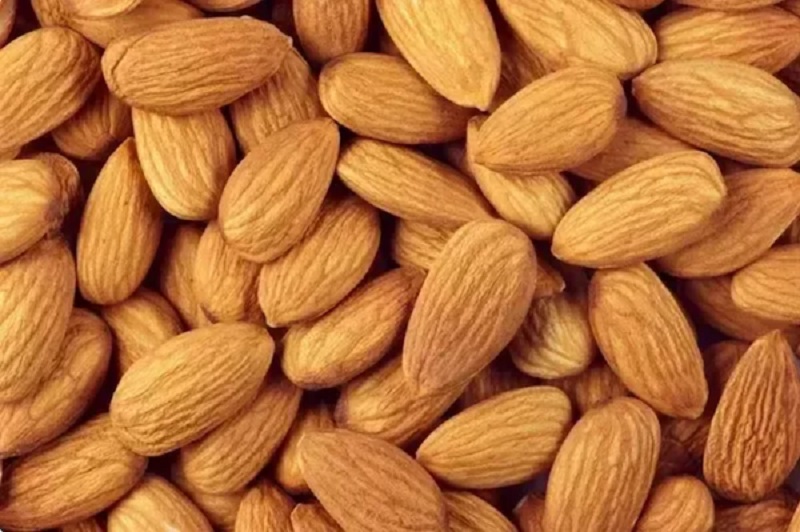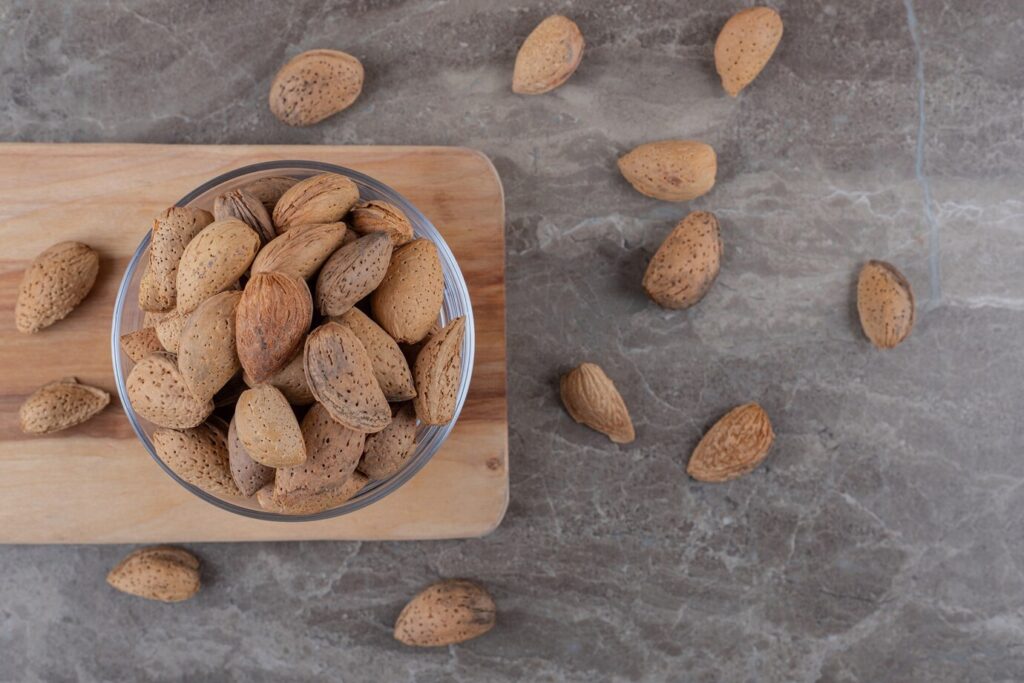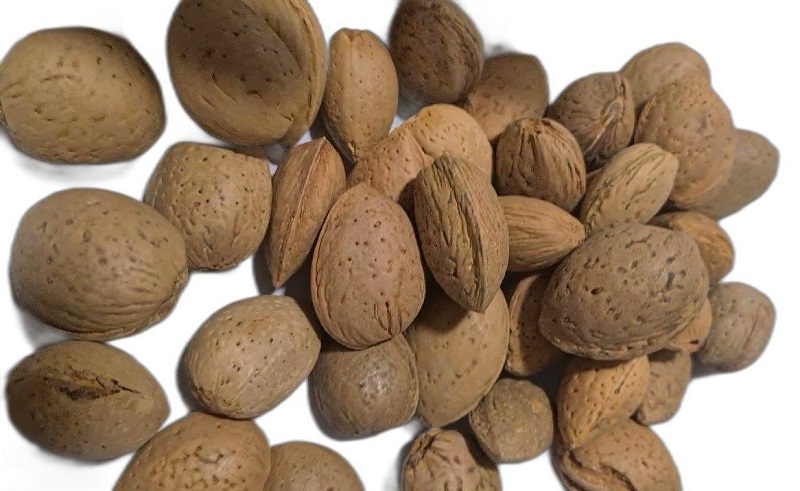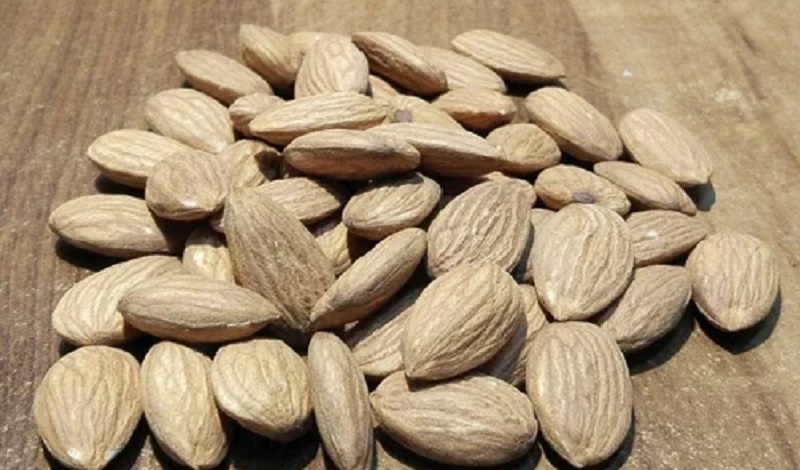Almonds are best known for their richness and health benefits and are considered a power-packed food item. Even studies have suggested that it helps maintain a healthy weight, lowers LDL (less than 40 milligrams per deciliter of blood), offers nutrients, and improves libido and heart or whatnot. In this article, you will explore the type of almonds you need to be made aware of and work as an antioxidant for body development. Understanding their distinct grades illuminates these cherished almonds’ culinary artistry and nutritional prowess. The captivated palates of almonds offer versatile types with richness and superiority.
Different Types of Almonds
I. Carmel almonds
These are some of the finest almonds in California. Introduced in 1966, they have had the world’s attention due to their long, flat, and semihard surface. They taste sweet and nutty and come in various forms, including blanched and roasted. Because of their specialty, you can easily differentiate almonds from others.

II. Butte almonds
These types of almonds are also known as padre almonds. Butte almonds are easy to recognize because of the light-colored semihard shell, flat texture, and wrinkles inside the surface. One of the specialties of almonds is that they are unique compared to others. They are small and pump from other types of almonds.

III. Sweet almonds
As its name suggests, it is sweet, leaving a heavenly taste. It’s interesting to note that sweet almonds have a unique appearance – they come in flat and light-colored tough shells, and on the inside, they have a medium-sized nut with a wrinkled peel.

IV. Green almonds
You must see the type of almonds with greenish skin and taste nutty. It must be interesting to know that green almonds have a velvety texture and a soft seed. It’s fascinating to learn that these almonds are in the early stage of the cycle and carry more nutrients than the ripened ones. Fitness enthusiasts might find these almonds the best type of badam to consume.

V. Nonpareil almonds
Nonpareil means “No similarity or having no match.” In this type of almonds, you can find flat-shaped nuts that are way too different from the other almonds mentioned in this article. They are smoother and sweeter than the other almonds which others. These types of almonds contain 6 grams of protein and 170 calories, so it is advised to add to your intake of essential amino acids.

VI. Peerless almonds
Light color from the outside and dark brown from the inside. Isn’t it amazing to know how the texture of one almond type differs from another? Peerless almonds are long in shape with a flat structure. The almonds’ creamy, sweet, and nutty texture leaves you perplexed to consume in quantity.

VII. Ferradual almonds
They are a variety of sweet almonds grown in the Mediterranean region, particularly in Spain. What makes Ferraduel almonds unique is their shape and size; they are smaller and plumper than other varieties of almonds, with a slightly curved shape. When it comes to taste, they are sweeter and have a milder flavor than other almonds. Ferraduel almonds are a good source of protein, fiber, healthy fats, and essential vitamins and minerals. They are also rich in antioxidants, which can help protect against oxidative stress and inflammation.

VIII. Sanora almonds
Sanora almonds come under the territory of Californian almonds. The outer shell is dark, thin, and rough, while the inner part has a crunchy and nutty texture. When it comes to nutrition, it balances protein, fat, and calories, which makes it perfectly blend with the food choices of health-conscious enthusiasts. These pertain to thrive in dry and hot weather.

IX. Molar almonds
The molar almonds taste luscious and long-lasting as the outer shells are soft and easily removable. Because of its quality, people prefer to eat them raw. Moreover, FSSAI has certified them with the tag of organic almonds, and they have a shelf-life of 12 months. It is rich in taste and has a lot of benefits, including the amount of healthy fat, protein, and nutrients.

X. Fritz almonds
They are classified as California almonds because they have a hard shell with low sutures that are easy to blanch. They are a great snack because they contain high nutrition and protein, help manage bone and weight, and reduce heart disease. So, adding Fritz almonds to your daily diet can be a healthy and tasty choice.

XI. Kashmiri almonds
Kashmiri almonds come in different shapes and sizes compared to other almonds. These Indian-originated almonds have 42% more oil than others, which helps maintain a proper balance between good and bad cholesterol. So, are these healthy for your health.

XII. Macrona almonds
In Mediterranean countries like Spain, Macrona almonds are very popular because of their sweet, moister, and soft texture. Moreover, its classy buttery flavor becomes its quality, making the almond recognizable globally. The only thing is that once the package is open, the shelf life of the almonds is just a few months.

XIII. Monterey almonds
These Californian almonds have smooth shells and long, wrinkled nuts. You can eat them raw, roast, bake, or use them in your midday snacks. Sometimes, people prefer to eat them by coating them with sugar to make candy or use them as a gift or gesture. Under 160 calories, you can consume 6g of protein, which ensures your dietary fiber.

XIV. Gurbandi almonds
They are also known as Choti Giri, as they are small, round, and wrinkled in the outer texture. This gives them a robust, nutty flavor. They are highly rich in vitamins, omega-3, antioxidants, fiber, and nutrition.

XV. Mamra almonds
These are the most expensive almonds on the market, but they are worth your money. Afghanistan and the valley of Kashmir are the founders of these almonds. The richness in these almonds comes from their natural oil, which is about 50%, and elevates a good balance between good and bad cholesterol.

Grades of almonds
Now that you know the variety of almonds, it is time to learn about the grades of almonds. Grades are based on shape, size, and quality, showing the almonds’ superiority. The standard and quality of the almonds are based on the grades. Let’s roll up our sleeves and understand the grades of almonds and what types of almonds fall under specified grades.
- U.S. Fancy is the highest grade of almonds, covering various characteristics. The almonds are clean, well-dried, whole, and free from decay, doubles, or broken kernels.
- Extra No. 1 is a high-quality almond grade with less than 5% chips and scratches and less than 1% broken and split almonds. The amount of foreign matter is less than 0.5%.
- No. 1 Supreme has a slightly high tolerance for scratches, chips, and doubles. However, it is free from loose, extraneous, and foreign material. It is also known for its visual appearance and is often used for further processing.
- U.S. Select Sheller Run- when it comes to understanding the mid-quality of the grade almonds, one thing that needs to be recognized is for various applications where minimal sorting or processing is required. These almonds are suitable for incorporating other ingredients, such as confectionery products, where a higher level of chipped or scratched kernels can be accepted. Additionally, they are appropriate for further processing, such as blanching, grinding, roasting, dicing, and slicing. So, if you are looking for almonds that can be quickly processed and blended with other ingredients, mid-quality grade almonds can be a great option.
- U.S. Standard Sheller Run- this grade of almonds consists of shelled almonds characterized as clean, whole, and properly dried almonds. They are almost 15% split and further processed for blanching, dicing, grinding, and pasting.
USDA Grading Parameters
The purpose of the grading parameters is to analyze the tolerance of the almonds based on the quality and grading. Different grades have different tolerance. So, let’s break down the parameters that influence the grading factors regardless of the shape and size of the almonds.
- Dissimilar—a variety of almonds are in one load, and then the whole almonds are used for the further process, including roasting and blanching.
- Doubles– as the name suggests, when two kernels develop in one shell, it is recommended to name doubles. Then, one appears concave, and the other is flat.
- Chips and scratches—several things need to be understood. Due to the mechanical process, kernels started to lose their skin. Some factors can be used to analyze injuries, such as if the diameter of the almonds is more significant than 3.2mm, then it is defined as the injury or the almonds are still affected. However, the almond is considered defective if the diameter is more significant than 6.4 mm.
- Foreign material– every almond has its defects, so it’s essential to know almonds’ different defects. Suppose you define the defect in the Foreign materials; then pieces of shell or hulls that are too big to pass through a screen measuring 8/64″ (3.2mm) in diameter can be considered.
- Particles and dust particles are so small that they don’t want enough space to enter almonds. If the almonds have a minor hole, then boom, the doors are open for particles and dust to enter the almonds.
- Splits and broken– these are considered when the almonds have less than seven-eights of a complete whole kernel. To further recognize the defected, you can say by their look. The naked eye can easily see gums, brown spots, discoloration, or shrivels.
Severe defects, such as decay, rancidity, insect damage, and mold, make a kernel or piece of kernel unsuitable for consumption. Scrutinizing almonds is essential to ensure they are free from defects.
Understanding the USDA (U.S. Department of Agriculture) in shell grades
The USDA standards are considered the gold standard for uniformity and quality in the field of almond grading.
- The USDA classifies almond shell grades into four categories: U.S. No. 1, U.S. No. 1 Mixed, U.S. No. 2, and U.S. No. 2 Mixed. Each category has its own set of requirements.
- U.S. No. 1: Almonds are devoid of loose, foreign material and have similar varietal characteristics. The shells should be free of breakage, adherent hulls, and discoloration and be clean and uniformly bright in color. The kernels should be thoroughly dried and free of flaws such as gum, mildew, rancidity, insect damage, or skin discoloration.
- Limit of Loose Foreign Material: 2% by weight, of which 1% passes through a 24/64″ screen.
- A maximum of 10% of defects are internal, of which 5% cause significant harm.
- U.S. No. 1 Mixed: Almonds that fit the requirements for U.S. No. 1 but are blended from two or more types.
- U.S. No. 2: Almonds that satisfy U.S. No. 1 requirements, with a 20% tolerance granted for discolored shells.
- U.S. No. 2 Mixed: Almonds that fit the requirements for U.S. No. 2 but are blended from two or more types.
- In terms of dimensions, the almonds should be 28/64″ thick unless otherwise noted.
Concluding Note
The exacting standards for shell cleanliness, kernel quality, and the existence of foreign material or faults are outlined in these grades, which range from U.S. No. 1 to U.S. No. 2 Mixed. At the top, U.S. No. 1 requires maximum kernel quality, homogeneity, and cleanliness. Varietal blends are permitted under specific headings, guaranteeing flexibility within predetermined bounds. The strict criteria satisfy a variety of purposes while upholding a high level, reassuring industries and customers alike of the quality of the almonds. It is essential for growers, processors, and consumers to be aware of these grades to ensure that almonds are chosen with particular end uses or preferences in mind. Ultimately, these USDA grades represent a dedication to quality, guaranteeing that each almond satisfies.


